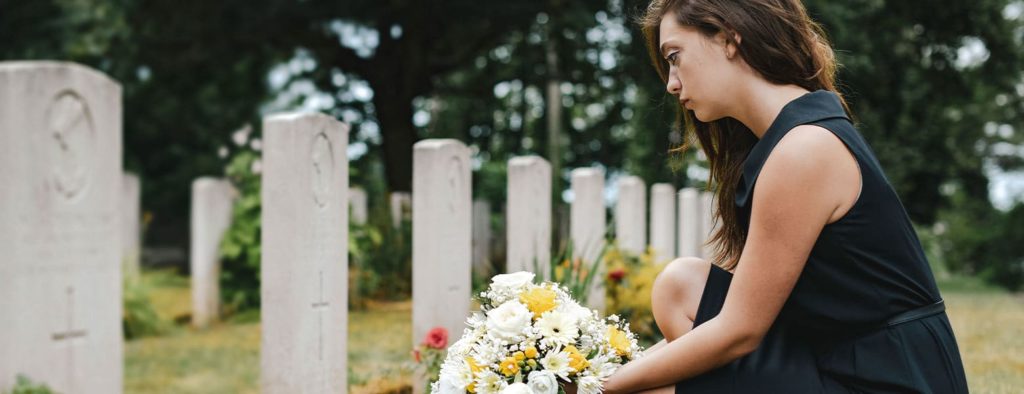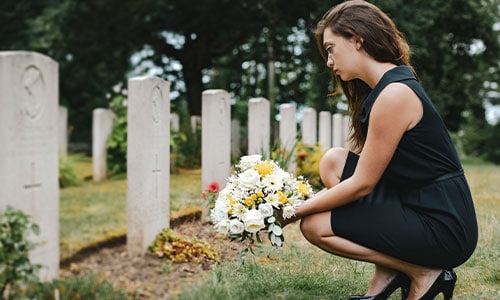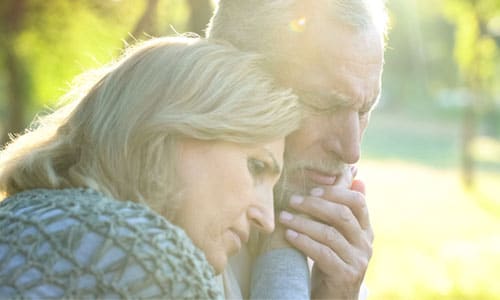
We’ve never been able to shelter ourselves from the effects of mortality. It’s an inevitability that we must all face when it comes to our own eventually passing but also when we need to part with friends and family. And it’s never been a more prescient concern than it is now during the pandemic. Grief and loss are becoming an ever-more increasing concern for many people who’re faced with the prospect of losing those close to them way before their allotted time is up.
Five Stages of Grief and Loss
If we can become aware of our grieving process and how it’s going to play out – or, in fact, is playing out right now – it makes it far easier to navigate the emotional rollercoaster of losing someone close to us. Because while mourning is necessary to help us bring closure to our relationships with those who’ve passed on, we don’t need to make it harder on ourselves than it already is.
The five stages of grief were originally conceptualised by Elisabeth Kubler-Ross in her 1969 book, On Death and Dying. However, contrary to popular belief, these stages of bereavement do not occur in any specific order. It can be, and often is, a non-linear process.
Stage 1: Denial
Despite the fact that these stages of grief can present themselves out of orders, it is most common that many people experience denial upon first hearing of someone’s passing. It’s very much a defensive mechanism and can help many people weather the shock of an untimely death in order to gather themselves. When people go into a state of denial, it’s often accompanied by a feeling of numbness. This state of denial places you in your own reality-construct – a place where nothing is wrong, and you’re able to continue on with day-to-day life as if nothing has happened at all. The denial in this context forms part of a buffer that eases us into the idea that our world as we know it is about to go through a huge shift. It’s also a common reaction to receiving news about a terminal diagnosis. Rather than engaging with the facts of our current situation, we instead base our actions on the perception of our reality – creating a “perception deception.”
Stage 2: Anger
Along with denial, anger is another stage that may also occur first. The two are generally interchangeable in the order they’re experienced, depending on the circumstance surrounding the passing of the deceased. However, viewing anger within the context of taking place sequentially after the stage of denial, it marks the end of the reality bubble we’ve created for ourselves and the moment when the realness of the experience begins to set in the assertion that, ‘this isn’t really happening to me,’ and ‘life’s not fair.’ In doing this, you may also look to manufacture blame and in order for you to direct your anger onto others as a means of venting your frustrations. It’s generally agreed by researchers and mental health practitioners that this stage of anger is actually a vital component of the grieving process as long as it’s channelled in a constructive – non-destructive – manner. The thinking behind this logic is that the anger must be dispelled and allowed to be suppressed – so it doesn’t resurface in the future as negative behavioural patterns.
Stage 3: Bargaining
Once the full impact of your circumstances has set in, it often leads to feelings of helplessness. Here, we have encountered something that is completely beyond our control. And through this, it can see us trying to make a deal some greater force to try and will things back to the way there were before. More commonly, this stage of bargaining can often see us creating a guilt complex. and the blame that we may have been projecting onto others now becomes our burden. This can take place through a series of ‘if only’ statements such as: ‘if only we’ve got them to the hospital sooner.’ Or ‘if we only we’d have spotted the signs earlier’ etc. But really, the bargaining process is a form of false hope. In a way, it’s an extension of the stage of denial and can even occur concurrently with it in some cases.
Stage 4: Depression
When we think of grief, depression is the most commonly accepted symptom we think of when dealing with the fallout. And this is for good reason. The sadness we associate with depression is many people’s definition of the mourning process. But there are actually two forms of depression that take place during grieving. The first is the initial reaction to the practical nature of our loss. This is the traditional sadness and regret that many people experience, which also extends to the planning of the funeral and other unexpected occurrences that coincide with someone’s passing. The second is the more insular variant. This is characterised by the internal separation process that we must go through when we accept that someone will no longer be a part of our lives.
Stage 5: Acceptance
The final stage is always acceptance. However, it’s not always a given that everyone will reach this point. For some people, the grieving process can be so all-encompassing that on some level, it never truly ends. Closure isn’t always easy to obtain. But it can be something that you consciously work towards as part of your own healing journey. Acceptance isn’t so much about saying that, ‘it’s ok that my partner has passed on.’ It’s more about the coming to terms with your own self-acceptance and acknowledging that despite this traumatic event, you acknowledge that, actually, ‘I’m going to be ok. I can move on.’ That’s what really acceptance is. At this point, your emotions have levelled out; you’ve had time to adjust to your new circumstances and let go of any self-limiting belief in the form of your perception deception filters that are preventing you from seeing things for what they really are.













